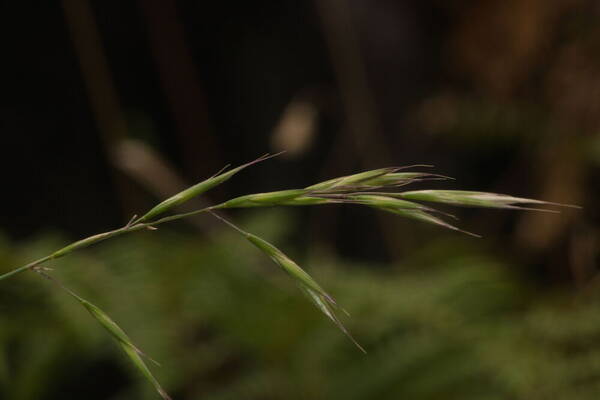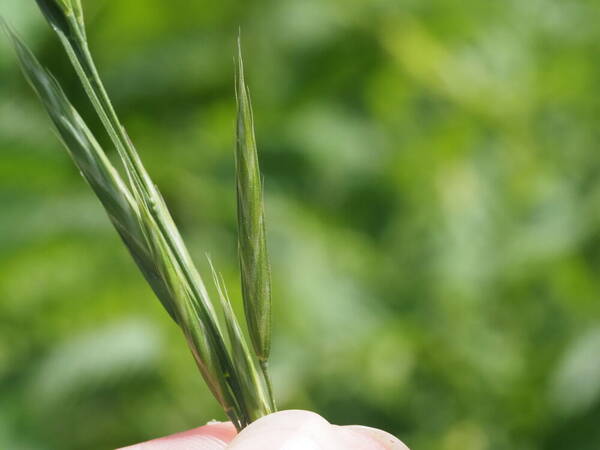Info
Subfamily: Pooideae
Genus etymology: Bromus = "food" [Greek] the ancient name for oats (Avena)
Species etymology: carinatus = "possessing a keel" [Latin] refering to the lemmas
Photosynthetic type: C3 (cool season)
Nativity: naturalized - accidental
First recorded in Hawaiʻi: 1936
Map

Inflorescence


Spikelets







Collar

Description
Plants annual, biennial, or perennial; loosely cespitose. Culms 45–120(–180) cm tall, usually less than 3 mm thick, erect. Sheaths mostly glabrous or retrorsely soft pilose, throats usually hairy; auricles sometimes present on the lower leaves; ligules 1–3.5(–4) mm, glabrous or sparsely hairy, acute to obtuse, lacerate or erose; blades 8–30 cm long, 1–12 mm wide, flat or becoming involute, glabrous or sparsely pilose to pubescent on 1 or both surfaces. Panicles 5–40 cm, lax, open or erect; lower branches usually shorter than 10 cm, 1–4 per node, ascending to strongly divergent or reflexed, with 1–4 spikelets variously distributed. Spikelets 20–40 mm, shorter than at least some pedicels and branches, elliptic to lanceolate, strongly laterally compressed, not crowded or overlapping, sometimes purplish, with 4–11 florets. Glumes glabrous or pubescent; lower glumes 7–11 mm, 3–7(–9)-veined; upper glumes 9–13 mm, shorter than the lowest lemma, 5–9(–11)-veined; lemmas 10–16(–17) mm, lanceolate, laterally compressed, strongly keeled distally, usually more or less uniformly pubescent or pubescent on the margins only, sometimes glabrous or scabrous, 7–9-veined, veins usually not raised or riblike, apices entire or with acute teeth shorter than 1 mm; awns 4–17 mm, sometimes slightly geniculate; anthers 1–6 mm. 2n = 28, 42, 56.
(Description source: Barkworth, M.E., Capels, K.M. & Long, S. (eds.) 1993. Flora of North America, north of Mexico. Volume 24. Magnoliophyta: Commelinidae (in part): Poaceae, Part 1. Oxford University Press, New York. 911 pp. http://floranorthamerica.org/Bromus_carinatus )